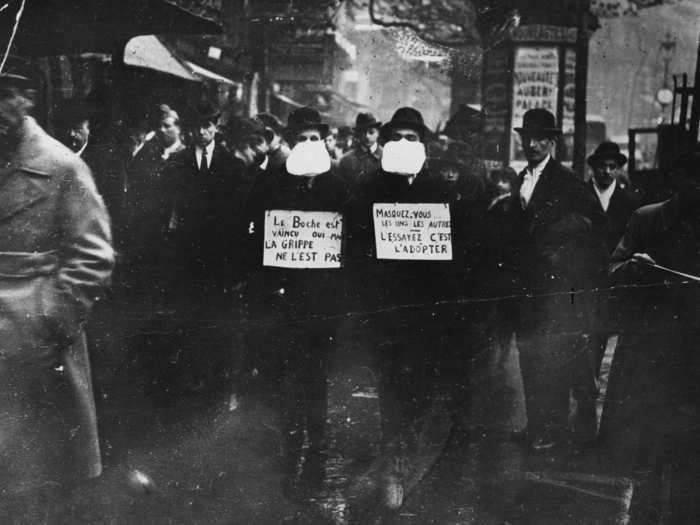
Source: Business Insider

Source: History

Source: History

Source: Business Insider


Source: NBC Bay Area


Source: Variety

Cities like San Francisco took that advice to the next level, even writing a law around it. If a person was caught without a mask in public or even wearing it improperly, they were arrested or fined.
San Francisco was lauded for its proactive response to the virus, but city officials relaxed their restrictions following the fall of 1918. After the third wave in the spring of 1919, San Francisco ended up with some of the highest death rates of the flu in the US.
Source: CBS News


Source: History

The city's health commissioner quickly called for schools and movie theatres to close and for public gatherings to be banned after an outbreak was found at a military barracks nearby.

The precautions that St. Louis took helped the city in "flattening the curve," but the Missouri city was hit hard when the flu returned the following spring in 1919 in what would be the third wave of the flu, just as San Francisco was.



Source: The Boston Globe


Source: The Boston Globe

 I spent $2,000 for 7 nights in a 179-square-foot room on one of the world's largest cruise ships. Take a look inside my cabin.
I spent $2,000 for 7 nights in a 179-square-foot room on one of the world's largest cruise ships. Take a look inside my cabin. Colon cancer rates are rising in young people. If you have two symptoms you should get a colonoscopy, a GI oncologist says.
Colon cancer rates are rising in young people. If you have two symptoms you should get a colonoscopy, a GI oncologist says. Saudi Arabia wants China to help fund its struggling $500 billion Neom megaproject. Investors may not be too excited.
Saudi Arabia wants China to help fund its struggling $500 billion Neom megaproject. Investors may not be too excited. Catan adds climate change to the latest edition of the world-famous board game
Catan adds climate change to the latest edition of the world-famous board game
 Tired of blatant misinformation in the media? This video game can help you and your family fight fake news!
Tired of blatant misinformation in the media? This video game can help you and your family fight fake news!
 Tired of blatant misinformation in the media? This video game can help you and your family fight fake news!
Tired of blatant misinformation in the media? This video game can help you and your family fight fake news!

Copyright © 2024. Times Internet Limited. All rights reserved.For reprint rights. Times Syndication Service.